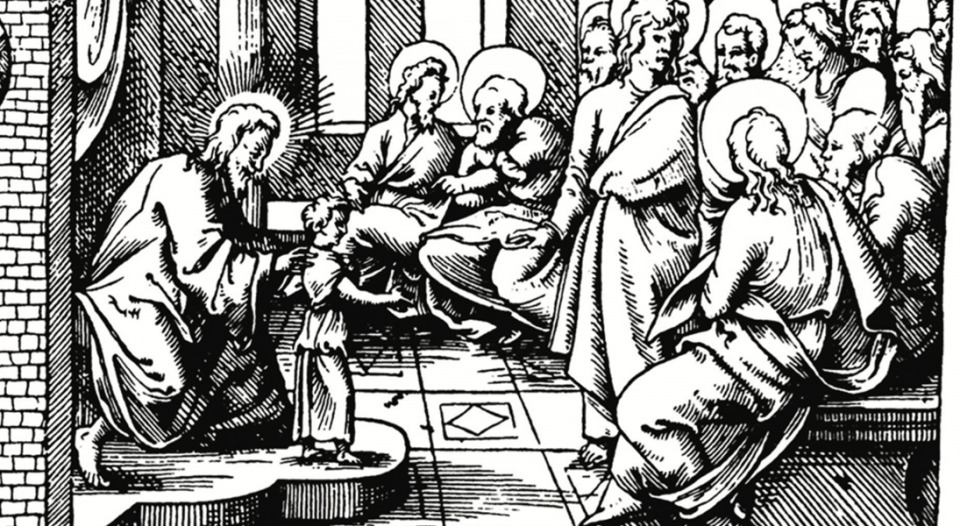“It is good once a year,” Martin Luther wrote, “to read through the whole story of the Passion.”
With 44 excerpts from Luther’s Easter sermons, Reformation historian Roland H. Bainton intended that readers of Martin Luther’s Easter Book (Augsburg Books, 1981) do just that, beginning with the week leading up to Good Friday and ending on the far side of the tomb.
Bainton does some heavy lifting to put into context some of the sermons through helpful asides, but on the whole, Luther’s words stand quite well on their own. He is a masterful writer, even for modern readers. Through these sermons we glimpse not only his working theology but a good bit of existential wrestling and some surprising nuggets of vulnerability.
The golden thread running throughout the work is easy to pluck, and Luther makes no effort to conceal it: the cross takes center stage, both in Jesus’ story and in the personal stories of every Christian. Even the resurrection is, for Luther, a postlude of sorts, treated in only five of the excerpts.
The crucifixion, when God in Christ proves that God loves us to death—and back again—is the pinnacle of God’s “alien work” (God’s judgment). It is the primary lens through which everything else (we, God, our work in the world) is viewed, and that comes through brilliantly.
In these texts we see Luther’s low opinion of humanity: we are an unruly bunch. But this opinion stands in stark contrast to the overwhelming love of God: “There is no greater lover than God,” he writes in astonishment, musing on John 3:16, “and no more desperate scoundrel than the world.” The reality of God’s sacrificial love in the face of humanity’s habitual predilection for sin brings Luther to his knees again and again. Clearly he’s moved and awestruck by such love, a love he doesn’t fully understand but is grateful to receive.
These sermons, which oscillate between Luther’s despair over the world and the unending joy he takes in Christ’s redeeming love for humanity, are a beacon of hope for those of us who look at the world and shake our heads. We easily forget that Luther existed in a time of great turmoil; his sermons address the action on the street as well as in the Scriptures. His preaching is hyper-contextualized, and reading it may bring us pastors to reflect on our own preaching and whether we’re addressing conditions on the ground.
“There is no greater lover than God,” he writes in astonishment, musing on John 3:16, “and no more desperate scoundrel than the world.”
A different look at Luther
The book flows elegantly through the Passion to Eastertide and, specifically when it addresses Maundy Thursday, is a handy catechetical refresher for the reader. Luther’s conviction that Christ is physically present in the bread and wine comes through and may give us pause as we consider our own sacramental conundrums in these pandemic days. We are surely being stretched in our thinking and understanding of how not only Christ but we, too, are present at the Lord’s Supper.
Luther’s sermons on the matter are not just thought-provoking but re-grounding for us today. Our distinct understanding of the eucharist has been a hallmark of our theology as ELCA Lutherans that sets us apart in the Christian landscape. Is it still?
There are some hurdles the reader must clear when reading these medieval sermons, with their thoroughly embodied devil and their historical barbs thrown at obscure theologians. But even here, readers can find opportunities for reflection.
When Luther rails against infighting in the Reformation movement, when he chides theologians obsessed with piety and a papacy more concerned with wealth than with widows, he invites the church to take a hard look in the mirror. Luther arrives at his opinions on these matters by using the cross-shaped lens, that lens of costly grace. Do we?
There are also touching moments of vulnerability in this collection. Luther’s instruction that we should address children as Herr Doktor because they instruct us in the faith, his compassion for Mary at the death of her son and his own admission to wrestling with the miracle of the resurrection (though he trusts it!) provide a different look at the theologian. Luther’s humanity shines through, even as he continually focuses on the humanity of Christ embodying God’s self-giving work through the arc of the Passion.
“Can the bones of Luther’s sermons live again?” Bainton asks at the outset of this compilation. Readers will likely answer a resounding “yes”—and, not only that, but that these sermons should live again. That cross-shaped lens is needed more than ever today, and this work can continue to help the church refocus.





